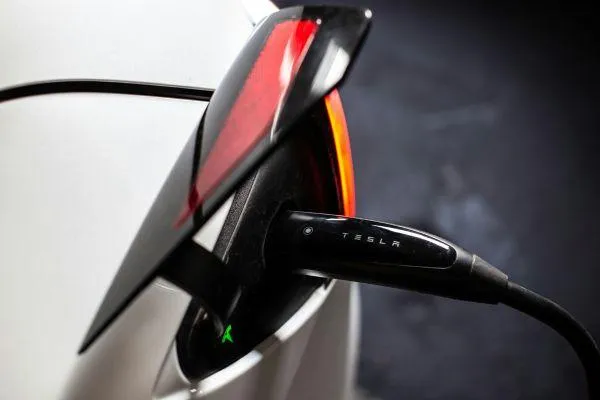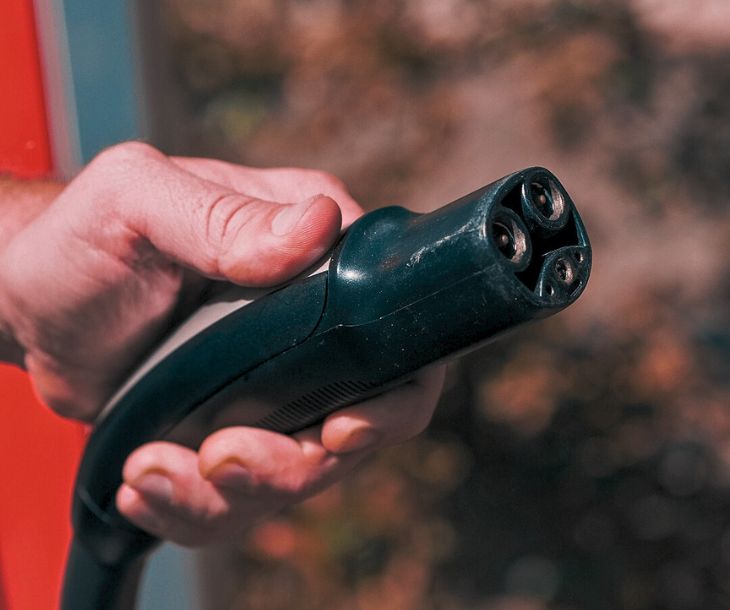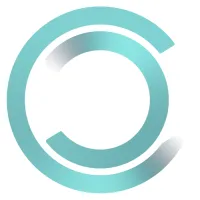EV Industry Insights, Trends, and Innovations

Unraveling the North American Charging Standard
“Yesterday, there was a wall of Tesla patents in the lobby of our Palo Alto headquarters. That is no longer the case. They have been removed, in the spirit of the open source movement, for the advancement of electric vehicle technology.” - Elon Musk (Press Release, 2014)
Introduction
Imagine a future where electric vehicle (EV) charging is as widespread and straightforward as filling up at a gas station. That future is rapidly materializing with the advent of the North American Charging Standard (NACS). Originating from Tesla, a pioneer in the EV industry, NACS is set to simplify and unify EV charging across North America. Tesla's initiative to open its proprietary charging technology to the world marks a pivotal moment in our journey towards sustainable transportation. This article explores the evolution, technical prowess, and widespread industry adoption of NACS, highlighting its role as a key enabler in the EV revolution.

Table of Contents:
1. Understanding the North American Charging Standard (NACS)
2. Technical Insights into the North American Charging Standard
4. NACS Impact: Adoption Trends and Consumer Insights
6. The Future of NACS and EV Charging
7. Frequently Asked Questions About the North American Charging Standard
8. Embracing the Future with NACS
Understanding the North American Charging Standard (NACS)
NACS: Revolutionizing EV Charging
NACS eradicates the complexities and confusion historically associated with EV charging. At its core lies a universal connector, designed to be compatible with every EV model. This connector isn't just versatile in its compatibility; it supports a diverse array of charging speeds. Whether it's a leisurely overnight charge or a swift charge needed mid-journey, NACS's connector caters to all scenarios with ease. Beyond its technical prowess, the connector is acclaimed for its user-centric design. It's straightforward to handle and connect, a significant advantage for users, including those facing physical limitations and/or disabilities, making EV charging more accessible and inclusive.
Smart Charging: The Future is Here
NACS isn’t just about physical connectivity; it’s a smart system that communicates with your vehicle. It intelligently adapts charging speeds to your car’s needs, optimizing for efficiency and battery health. This advanced system even allows for bi-directional charging, enabling your EV to give back energy to the grid or your home.
NACS Versus Other Standards
NACS stands out in the landscape of EV charging standards. Previously, drivers navigated a mix of systems:
CCS: Popular in Europe and America, CCS features separate connectors for AC and DC charging. Its adoption by several automotive giants is noteworthy, but its widespread availability and usability lag behind NACS.
CHAdeMO: Pioneering in fast and bi-directional charging, CHAdeMO’s adoption has been mainly limited to Japanese automakers, lacking the global reach of NACS.
Tesla’s Supercharger Network: Before NACS, this was a Tesla-exclusive network, offering fast charging but limited to Tesla vehicles.
NACS transcends these limitations. It simplifies the user experience with a single connector design and extends the benefits of bi-directional charging with enhanced compatibility. Unlike Tesla’s original network, NACS paves the way for a universally accessible charging infrastructure.
Technical Insights into the North American Charging Standard
Innovative Connector Design and Universal Compatibility
The NACS, standardized as SAE J3400, features a connector design notable for its compact size and universal compatibility. Designed by Tesla in 2012, this connector can support both AC and DC charging, fitting a variety of charging ports across different EV brands and models. The ergonomic design includes LED indicators, easy-grip handles, and a seamless plug-in mechanism, making it user-friendly and accessible.
Advanced Charging Technologies and Smart Charging Systems
NACS supports a wide range of charging speeds – up to 250 kW with Tesla’s current V3 Supercharger. Although, we have been starting to see the installation of the all-new V4 Superchargers, which according to sources, are able to deliver up to 350 kW of power. For AC power, it delivers up to 80 amperes at 277 volts, derived from a three-phase commercial power supply. In typical residential settings (North American split-phase electric power system), it provides up to 48 amperes at 240 volts, equating to about 11.5 kW. This versatility meets diverse user needs, optimizing energy transfer for efficiency and reduced waste. NACS incorporates intelligent charging systems that dynamically adjust charging speeds based on vehicle conditions and battery health, and can integrate with home energy management systems for optimized charging.
Ensuring Safety, Security, and Global Standards Compatibility
With robust safety protocols, NACS protects against electrical hazards like short-circuits and overcurrents. It features weather-resistant components and advanced encryption for data security, maintaining the integrity of the charging network. NACS is designed with a global perspective, exhibiting compatibility with major international charging standards like CCS and CHAdeMO. This interoperability is crucial for international EV users and contributes to the global EV market’s growth.
Technical Specifications and Operation
The NACS connector operates with a five-pin layout. The DC+/L1 and DC-/L2 pins cater to both AC and DC fast charging, while the Ground pin ensures full-current protective grounding. The Control Pilot (CP) pin facilitates digital communication between the charging system and vehicle, and the Proximity Pilot (PP) pin signals the vehicle connector status. NACS’s design and features position it as a potential model for future international charging standards, influencing the evolution of global EV charging protocols.
NACS Impact: Adoption Trends and Consumer Insights
Adoption by Major Automakers
The shift to the North American Charging Standard (NACS) by key automakers marks a pivotal change in the electric vehicle (EV) landscape. Tesla has catalyzed this shift, opening its Supercharger network to all EVs with the NACS connector.
The following automakers have officially announced their move to NACS, demonstrating a significant industry-wide shift:
BMW Group (including BMW, MINI, and Rolls-Royce)
Fisker Automotive
Ford
General Motors
Genesis
Hyundai
Kia
Lucid Motors
Rivian
Volvo
Polestar
Volkswagen Group (actively evaluating NACS implementation)
Nissan/Infiniti
Toyota/Lexus
Honda/Acura
Mercedes-Benz (also expanding its own charging network to include NACS ports)
Transforming the Industry
This unified stance on EV charging, spearheaded by Tesla, is heralding a significant evolution in the industry. Automakers, who had been navigating a fragmented landscape of charging systems, are now aligning under a common standard. This alignment promises a more interconnected and efficient future for EV infrastructure.
NACS is catalyzing more than just technical uniformity; it's driving a comprehensive overhaul across the EV sector. For infrastructure developers, NACS simplifies and accelerates the expansion of charging networks, making EVs more accessible to a broader audience. For consumers, the clarity brought by NACS eases the transition to electric vehicles, tackling key concerns such as range anxiety and charging compatibility.
Consumer Benefits and Global Influence
For consumers, the NACS initiative brings multiple advantages. The simplicity of finding compatible charging stations, combined with potential cost reductions for both home and public charging, enhances the appeal of EV ownership. Additionally, the shift to a universal standard is expected to bolster the resale value of EVs, making them a more enticing investment.
NACS's influence, initially rooted in North America, has the potential to extend globally, influencing charging practices and leading to a more cohesive global charging infrastructure.
The Future of NACS and EV Charging
Evolving Standards in EV Charging
The North American Charging Standard (NACS) is at the forefront of revolutionizing the EV charging experience. Its universal connector design is a game-changer, promising compatibility across various models and reducing the need for multiple adapters. This move towards universal compatibility is a significant step in creating a more standardized and user-friendly global EV charging infrastructure.
Technological Advancements in NACS
NACS's future is intertwined with the advent of new technologies like ultra-fast and wireless charging, which are poised to significantly cut down charging times. Innovations in smart charging systems and bi-directional charging are set to optimize energy usage, offering benefits to both EV users and the electrical grid.
NACS and Smart City Integration
The integration of NACS within smart cities, particularly its synergy with renewable energy sources and smart grids, is expected to create an efficient energy ecosystem. This collaboration will not only cater to the increasing demand for EV charging but will also play a crucial role in reducing urban transportation's carbon footprint.
Renewable Energy and Grid Stability
Incorporating Vehicle-to-Grid (V2G) technology into NACS will enable electric vehicles to contribute to the stability of the power grid. By supplying excess energy back to the grid during peak times, EVs can help establish a more balanced and sustainable energy system.
Impact of Government Policies on NACS
Governmental policies, including incentives for EV purchases and investments in charging infrastructure, are key to the widespread adoption of NACS. These policies are expected to boost consumer confidence and motivate automakers and charging providers to align with the NACS standards.
Consumer Trends and Market Dynamics
The future trajectory of NACS will be significantly influenced by evolving consumer preferences and market trends. As environmental awareness grows and the demand for cost-effective transportation options rises, the need for universally compatible EV charging solutions like NACS is expected to surge.
Frequently Asked Questions About the North American Charging Standard (NACS)
What is the Tesla North American Charging Standard (NACS)?
The North American Charging Standard (NACS), introduced by Tesla in 2012 with the launch of its Model S sedan, is a proprietary EV charging connector system. Initially exclusive to Tesla vehicles and its Supercharger network, NACS supports both AC and DC charging and can deliver up to 1MW of power. Tesla recently opened up NACS to other manufacturers, allowing broader adoption across the EV industry.
Which car companies are switching to the NACS?
Several automakers have announced plans to adopt the NACS for their future EV models, indicating a significant industry-wide shift. Major automakers committing to NACS include Ford, General Motors, BMW Group, Fisker, Genesis, Hyundai, Kia, Lucid, Rivian, Volvo, Polestar, Nissan/Infiniti, Toyota/Lexus, Mercedes-Benz, and others. These companies are expected to integrate NACS ports into their new EV models starting in 2024 or 2025, with some offering adapters for existing vehicles equipped with CCS ports.
What is the difference between CCS and NACS standards?
CCS (Combined Charging System) and NACS are both prominent EV charging standards. The key differences include:
Connector Size and Weight: CCS connectors are larger and heavier, while NACS connectors are more compact and lighter.
Power Level: CCS supports up to 350 kW, whereas NACS can deliver up to 1MW.
Prevalence: CCS is more common in Europe, while NACS is rapidly becoming the standard in North America. Tesla’s decision to open its Supercharger network to non-Tesla EVs and the growing adoption of NACS by various automakers and charging networks are influencing this shift.
What companies currently use the NACS?
Tesla was the sole user of NACS but has recently begun opening its network to non-Tesla EVs. Companies like Aptera Motors, Ford, General Motors, and various others have committed to adopting NACS. Moreover, charging network operators like ChargePoint are transitioning to support NACS, further expanding its availability and reinforcing it as a new standard in North America.
Embracing the Future with NACS
NACS: A Milestone in EV Charging Technology
The North American Charging Standard (NACS) marks a significant advancement in the electric vehicle (EV) industry. It's not just about introducing a new charging protocol; it's about innovating and improving the EV charging experience. NACS is reshaping the dynamics of EV charging with its technical sophistication and user-centric design, paving the way for a more unified and efficient EV infrastructure.
The Role of NACS in Transforming EV Charging
As the EV landscape continues to evolve, the role of NACS becomes increasingly central. It aims to simplify the charging process, address range concerns, and enhance the overall convenience of using electric vehicles. NACS is about offering practical solutions to real-world challenges in EV charging, moving us towards a system that's more integrated and seamless for all users.
Stay Informed and Engaged
We encourage you to keep abreast of these exciting developments in EV charging technology. Follow our social media channels for the latest updates and insights into the world of EVs and NACS. Engage with our content, share your perspectives, and be part of a community that's driving technological advancements in electric transportation.
Join Us in the Technological Evolution
We invite you to join this journey. Follow us, stay informed, and engage with a community dedicated to enhancing the EV experience. Your participation is a step towards embracing the technological advancements in the world of EV charging.
Sources:
Lambert, Fred. “Tesla Finally Confirms Supercharger V4 Has 350 kW Output.” Electrek, July 26, 2023. Accessed November 23, 2023. https://electrek.co/2023/07/26/tesla-confirms-supercharger-v4-350-kw-output/.
Musk, Elon. “All Our Patent Are Belong To You.” Tesla, June 12, 2014. Accessed November 23, 2023. https://www.tesla.com/blog/all-our-patent-are-belong-you.
Reuters. “More Automakers Plug into Tesla's EV Charging Network.” Reuters, November 6, 2023. Accessed November 23, 2023. https://www.reuters.com/business/autos-transportation/more-automakers-plug-into-teslas-ev-charging-network-2023-11-06/.
The Tesla Team. “Opening the North American Charging Standard.” Tesla, November 11, 2022. Accessed November 23, 2023. https://www.tesla.com/blog/opening-north-american-charging-standard.
Book, Charge, & Drive in Minutes
Exceptional service, fast charging. We're here for you.

